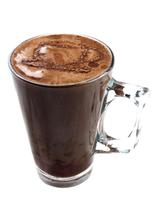Introduction to the growth process of coffee beans how about Dingrui brand coffee machine
Coffee beans produced by washing account for almost 70% of the total output of coffee beans.
Sometimes poor treatment of fermentation time will produce fermentation odor and special sour taste; if handled well, it can form the personalized aroma of coffee beans.
At this time, the coffee beans can be sent to various places in gunny bags, or in special containers across the sea. The fruits in the water are moved to the pulp removal machine, peeling off the skin and pulp, and then put back into the tank to remove the floating matter. Pour the "core" in the water into the fermentation tank, soak for half a day or a day, remove the colloid on the fermented bean surface, wash, dry or mechanically dry, and remove the endocarp on the peeling machine. It becomes a commercial raw coffee bean. This method gives coffee beans a soft sour taste and a mild bitter taste. This method is used in Brazil, Ethiopia, Yemen and other places. Disadvantages: vulnerable to weather, defective beans and foreign bodies are more likely to mix. Therefore, it is necessary to select it carefully before delivery.
In the washing type, the harvested fruit is poured into the sink to remove the floating matter.

Important Notice :
前街咖啡 FrontStreet Coffee has moved to new addredd:
FrontStreet Coffee Address: 315,Donghua East Road,GuangZhou
Tel:020 38364473
- Prev

The Origin and History of Coffee beans
By the 16th century, early merchants had sold coffee in Europe, thus introducing coffee as a new drink into Western customs and life. Most of the coffee exported to the European market comes from Alexandria and Smyrna, but with the growing market demand, high tariffs imposed by import and export ports and people on coffee trees
- Next

Specifications of coffee beans treatment methods of coffee beans
Water-washed coffee beans have more beautiful color and less impurities. Colombia, Mexico, Guatemala and other countries adopt this method for about 70% of their output. Sometimes in the fermentation process, if not handled properly, it may give off fermentation odor and its unique sour taste, but if handled properly, all kinds of beans can give off their unique coffee aroma. a. Washing type / non-washing type: in
Related
- Does Rose Summer choose Blue, Green or Red? Detailed explanation of Rose Summer Coffee plots and Classification in Panamanian Jade Manor
- What is the difference between the origin, producing area, processing plant, cooperative and manor of coffee beans?
- How fine does the espresso powder fit? how to grind the espresso?
- Sca coffee roasting degree color card coffee roasting degree 8 roasting color values what do you mean?
- The practice of lattes: how to make lattes at home
- Introduction to Indonesian Fine Coffee beans-- Java Coffee producing area of Indonesian Arabica Coffee
- How much will the flavor of light and medium roasted rose summer be expressed? What baking level is rose summer suitable for?
- Introduction to the characteristics of washing, sun-drying or wet-planing coffee commonly used in Mantenin, Indonesia
- Price characteristics of Arabica Coffee Bean Starbucks introduction to Manning Coffee Bean Taste producing area Variety Manor
- What is the authentic Yega flavor? What are the flavor characteristics of the really excellent Yejasuffi coffee beans?

